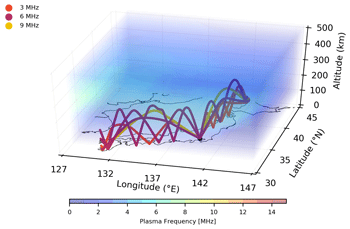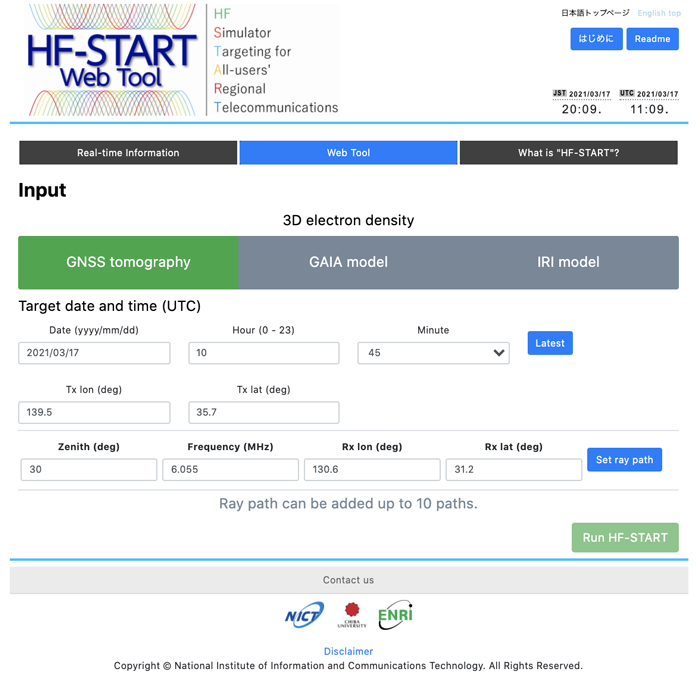Commencement of Shortwave Propagation Simulator (HF-START) Service
– Demonstrating radio wave propagation paths between any two points based on real-time space weather information –
March 24, 2021
National Institute of Information and Communications Technology
Highlights
- Demonstrate real-time shortwave propagation based on realistic space weather information.
- Estimate and visualize shortwave propagation between any two points on the Earth selected by the user.
- Web application-in-aid for shortwave broadcasting, aviation communications, amateur radio, etc.
Background

The radio wave propagation paths at 3, 6 and 9 MHz transmitted from Tokyo to Hokkaido, and from Tokyo to Kagoshima are shown. The radio propagation at 12 MHz is also calculated, but is not displayed because the 12 MHz does not reach the destination.
[Click picture to enlarge]
Achievements

The user can set radio wave propagation conditions between arbitrary points.
Future Prospects
Roles of each institution
Article information
Related past press release
Appendix
HF-START system released this time

HF-START website

Glossary


Technical Contact
HOZUMI Kornyanat, TAO Chihiro
Space Environment Laboratory
Applied Electromagnetic Research Institute
NICT
Tel: +81-42-327-5005
E-mail:


















Media Contact
Press Office
Public Relations Department
NICT
E-mail:





















